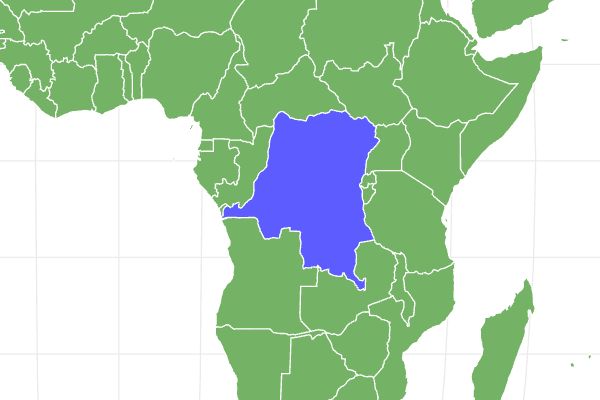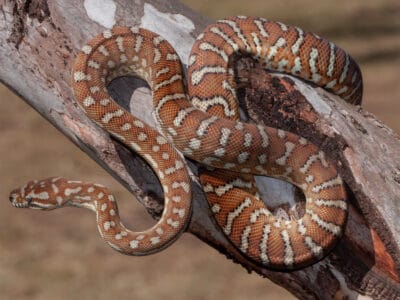Okapi
.jumbotron {
background-image: url(“https://a-z-animals.com/media/animals/images/original/okapi-400×300.jpg”);
}
}
@media only screen and (min-width: 641px) and (max-width: 920px) {
.jumbotron {
background-image: url(“https://a-z-animals.com/media/animals/images/original/okapi-470×370.jpg”);
}
}
@media only screen and (min-width: 921px) {
.jumbotron {
background-image: url(“https://a-z-animals.com/media/animals/images/original/okapi.jpg”);
}
}
Eats more than 100 different types of plant!
Okapi Scientific Classification
- Kingdom
- Animalia
- Phylum
- Chordata
- Class
- Mammalia
- Order
- Artiodactyla
- Family
- Giraffidae
- Genus
- Okapia
- Scientific Name
- Okapia johnstoni
Read our Complete Guide to Classification of Animals.
Okapi Conservation Status
Okapi Facts
- Prey
- Leaves, Shoots, Fruit
- Name Of Young
- Calf
- Group Behavior
-
- Solitary
- Fun Fact
- Eats more than 100 different types of plant!
- Estimated Population Size
- 22,000
- Biggest Threat
- Habitat loss
- Most Distinctive Feature
- Horizontal white stripes on rear and legs
- Other Name(s)
- Forest Zebra
- Gestation Period
- 15 months
- Habitat
- Dense mountain rainforest
- Predators
- Leopard, Serval, Human
- Diet
- Herbivore
- Average Litter Size
- 1
- Lifestyle
-
- Diurnal
- Common Name
- Okapi
- Number Of Species
- 1
- Location
- central Africa
- Slogan
- Eats more than 100 different types of plant!
- Group
- Mammal
Okapi Physical Characteristics
- Color
-
- Brown
- Red
- Black
- White
- Skin Type
- Fur
- Top Speed
- 37 mph
- Lifespan
- 20 – 30 years
- Weight
- 200kg – 300kg (440lbs – 660lbs)
- Length
- 1.5m – 2m (4.9ft – 6.5ft)
- Age of Sexual Maturity
- 2 – 3 years
- Age of Weaning
- 6 months
This post may contain affiliate links to our partners like Chewy, Amazon, and others. Purchasing through these helps us further the A-Z Animals mission to educate about the world’s species..

Spiders that fly! Fish that walk! And 1000+ more incredible animals. Discover them all for FREE
.photo-gallery {
–margin: 0px auto 0px;
–padding: 0px 0px 0px 0px;
}
.gallery-link {
background-image: url(“https://a-z-animals.com/media/animals/images/original/okapi.jpg”);
background-repeat: no-repeat;
background-size: cover;
background-position: center;
height: 500px;
justify-content: center;
text-align: center;
align-items: center;
display: flex;
border: 2px solid #000;
}
.gallery-link img {
height: 50%;
}
@media only screen and (max-width: 768px) {
.gallery-link {
height: 300px !important;
}
}
Okapi Classification and Evolution
The Okapi is an elusive, herbivorous animal that is found in a small pocket of tropical mountain forest in central Africa. Despite its Deer-like appearance the Okapi is actually one of the last remaining ancestors of the Giraffe, which is the tallest animal on Earth. Along with having a relatively long neck compared to its body size, the most striking feature of the Okapi is the horizontal stripes that are particularly visible on their behinds and give this animal an almost Zebra-like appearance. The Okapi is a very shy and secretive animal, so much so in fact that they were not recognised as a distinct species by western science until the earth 20th century. Although they are seldom seen by people, the Okapi is not an endangered species as they are thought to be fairly common in their remote habitats.
Okapi Anatomy and Appearance
Like its distant and much larger ancestor, the Okapi has a long neck which not only helps it to reach leaves that are higher up, but also provides the Okapi with a tool to both defend itself and its territory. The Okapi has a red-brown coloured coat of fur with horizontal, white striped markings that are found on their hind quarters and at the tops of their legs, and provide the Okapi with excellent camouflage in the dense jungle. They have white ankles with a dark spot above each hoof and very thick skin to help protect them from injury. The Okapi has a long head and dark muzzle with large set-back ears which enable the Okapi to detect approaching predators easily. The Okapi also has an impressively long tongue, which is not only black in colour but it is also prehensile meaning that it is able to grab hold of leaves from the branches above. The appearance of the Okapi makes it one of the strangest animals alive in the world today.
Okapi Distribution and Habitat
The Okapi is an animal that is found in the dense tropical rainforests of north-eastern Democratic Republic of Congo generally at an altitude that can vary between 500 and 1,000 meters, although the majority of individuals are thought to inhabit areas at roughly 800 meters above sea level. They are incredibly shy and elusive animals and rely heavily on the very thick foliage around them to protect them from being spotted by predators. The Okapi can also be found in areas where there is a slow-moving fresh water source, but the range of the Okapi is very much limited by natural barriers, with unsuitable habitats on all four sides trapping these animals into the 63,000 square kilometre Ituri Rainforest. Around a fifth of the rainforest is today made up of the Okapi Wildlife Reserve, which is a World Heritage Site. Although they are thought to be common in their native region, the Okapi has been severely threatened by habitat loss particularly from deforestation.
Okapi Behaviour and Lifestyle
The Okapi is a diurnal animal meaning that they are most active during the day when they spend the majority of their time roaming set paths through the forest in search of food. They are solitary animals with the exception of the time mothers spend with their calves but are known to tolerate other individuals and may occasionally feed together in small groups for a short period of time. Okapi have overlapping home ranges with males tending to occupy a larger territory than females, which is marked with both urine and by rubbing their necks on trees. Males also use their necks to fight with one other to both settle disputes over territory and to compete to mate with a female during the breeding season. Okapis are known to also communicate with one another using quiet “chuff” sounds and rely heavily on their hearing in the surrounding forest where they are not able to see very far at all.
Okapi Reproduction and Life Cycles
After a gestation period that can last for up to 16 months, the female Okapi retreats into the dense vegetation where she gives birth to a single calf. Like many hoofed-herbivores, the Okapi calf is usually able to stand within half an hour when mother and baby then begin starting to look for a good nest spot. They remain in their nest deep in the undergrowth for the majority of the next two months which not only helps the calf to develop more rapidly but also gives it vital protection from hungry predators. Although the female Okapi will protect and feed her vulnerable calf, the two are not thought to share the same close bond that occurs with numerous other hoofed mammals. Although they do begin to develop their white stripes at a fairly young age, the young Okapi do not reach their full adult size until they are roughly three years old. They are generally weaned at around 6 months old but may continue to suckle from their mother for more than a year.
Okapi Diet and Prey
The Okapi is a herbivorous animal meaning that it survives on a diet that is only comprised of plant matter. They eat leaves, shoots and twigs that are drawn into their mouths using their long prehensile tongue along with fruits, berries and other plant parts. The Okapi will even eat fungi on occasion and is known to eat more than 100 different types of plant, many of which are poisonous to other animals and Humans. Along with consuming a vast variety of plant material, the Okapi is also known to eat a reddish clay that provides essential salt and minerals to its plant-based diet. The Okapi spends a great deal of the daylight hours in search of food and walks quietly along well-trodden paths that it uses regularly to ensure an easier escape from predators.
Okapi Predators and Threats
Due to the fact that the Okapi inhabits such a secluded region of mountain rainforest, it actually has surprisingly few common predators particularly in comparison to similar species. The main predator of the Okapi is the Leopard, which is one of the world’s largest and most powerful felines and an animal that spends a lot of time resting in the trees. Unlike other predators which the Okapi’s acute hearing would sense moving through the undergrowth, the Leopard’s position above ground means that they are able to both survey the surrounding area for potential prey and are also able to ambush it from above. Other predators of the Okapi include the Serval and Human hunters in the area, but the biggest threat to the world’s Okapi population is habitat loss due to deforestation.
Okapi Interesting Facts and Features
One of the most distinctive features of both the Okapi and the Giraffe is their long prehensile tongue which can not only be used to grab onto leaves and branches but it also assists the animal when grooming. The tongue of the Okapi is in fact so long, that they are one of the few animals in the world that are said to be able to lick their own ear! Although they are quite rare and very secretive animals, there were sightings of the Okapi in these forests but these generally involved seeing the animal from behind and so the Okapi was known by many as a Forest Zebra. The Okapi was not classified as a distinct species until 1900 – 1901, when Harry Johnston sent two pieces of Zebra-like skin to London which was analysed and meant that a new species had been recorded.
Okapi Relationship with Humans
Until the beginning of the last century, the Okapi itself was not known to western scientists but the native people of the region were known to hunt this rare and elusive animal for both its meat and its thick hide. Today this secretive animal is still seldom seen in the high mountain rainforests of central Africa both due to its shy nature and its excellent camouflage amongst the dense foliage, so much of what we know about the Okapi is from observations of individuals found in zoos and animal institutions around the world. This however was not really successful until the introduction of planes as the trauma endured by the animal on trains on boats often meant that there was a high mortality rate of the individuals that were captured.
Okapi Conservation Status and Life Today
Although they are thought to be fairly common throughout their naturally isolated range, the Okapi has been listed by the IUCN as an animal that is Near Threatened from extinction in its natural environment. This is due to the increase of deforestation in parts of their natural habitat along with the fact that they are becoming increasingly caught on snares and other traps that are set by locals to catch other animals. The Okapi has been protected by law in the Democratic Republic of Congo (formally Zaire) since 1933, and the IUCN last estimated that there were between 10,000 and 35,000 individuals left in the wild.
View all 24 animals that start with O
Okapi FAQs (Frequently Asked Questions)
Are Okapis herbivores, carnivores, or omnivores?
Okapis are Herbivores, meaning they eat plants.
What Kingdom do Okapis belong to?
Okapis belong to the Kingdom Animalia.
What class do Okapis belong to?
Okapis belong to the class Mammalia.
What phylum to Okapis belong to?
Okapis belong to the phylum Chordata.
What family do Okapis belong to?
Okapis belong to the family Giraffidae.
What order do Okapis belong to?
Okapis belong to the order Artiodactyla.
What type of covering do Okapis have?
Okapis are covered in Fur.
What genus do Okapis belong to?
Okapis belong to the genus Okapia.
Where do Okapis live?
Okapis live in central Africa.
In what type of habitat do Okapis live?
Okapis live in dense mountain rainforests.
What are some predators of Okapis?
Predators of Okapis include leopards, servals, and humans.
How many babies do Okapis have?
The average number of babies an Okapi has is 1.
What is an interesting fact about Okapis?
An Okapi eats more than 100 different types of plants!
What is the scientific name for the Okapi?
The scientific name for the Okapi is Okapia johnstoni.
What is the lifespan of an Okapi?
Okapis can live for 20 to 30 years.
How many species of Okapi are there?
There is 1 species of Okapi.
What is the biggest threat to the Okapi?
The biggest threat to the Okapi is habitat loss.
What is another name for the Okapi?
The Okapi is also called the forest zebra.
How many Okapis are left in the world?
There are 22,000 Okapis left in the world.
How fast is an Okapi?
An Okapi can travel at speeds of up to 37 miles per hour.
What are the key differences between okapis and zebras?
The key differences between okapis and zebras are size, appearance, habitat, predators, diet, and behavior.
What are the key differences between okapis and giraffes?
The key differences between okapis and giraffes are size, appearance, habitat, predators, diet, and behavior.
How to say Okapi in …
Окапи
Ocapi
Okapi
Okapi
Okapi
Okapi
Okapio
Okapia johnstoni
Okapi
Okapi
אוקפי
Okapi
Okapi
Okapi
Okapia johnstoni
オカピ
Okapi
Okapi
Okapi
Okapi
Ocapi
Okapi
Okapi
Okapi
㺢㹢狓
Sources
- David Burnie, Dorling Kindersley (2011) Animal, The Definitive Visual Guide To The World’s Wildlife
- Tom Jackson, Lorenz Books (2007) The World Encyclopedia Of Animals
- David Burnie, Kingfisher (2011) The Kingfisher Animal Encyclopedia
- Richard Mackay, University of California Press (2009) The Atlas Of Endangered Species
- David Burnie, Dorling Kindersley (2008) Illustrated Encyclopedia Of Animals
- Dorling Kindersley (2006) Dorling Kindersley Encyclopedia Of Animals
- David W. Macdonald, Oxford University Press (2010) The Encyclopedia Of Mammals
- Okapi Information, Available here: http://animaldiversity.ummz.umich.edu/site/accounts/information/Okapia_johnstoni.html
- Okapi Conservation, Available here: http://www.iucnredlist.org/apps/redlist/details/15188/0
- About the Okapi, Available here: http://www.africanwildlifevacations.com/about-the-okapi.html
















